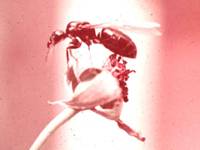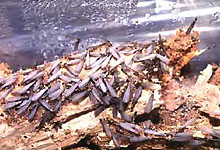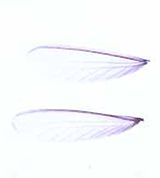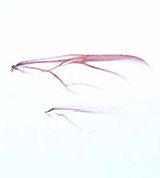- Yokohama-shi Top Page
- Health, Medical and Welfare
- Health and Medical Care
- institute for health
- Living Environment Hygiene Information
- Information on pests
- A lot of insects with wings appear in the washroom! (Termite)
Here's the text.
A lot of insects with wings appear in the washroom! (Termite)
Last Updated April 1, 2023

Queen of ant

White ant
Have you ever seen insects with many feathers flocking around the windows of washrooms and bathrooms from May to June?
The first thing to be questioned is the termite. But there is also a possibility of a wing ant. Don't panic with the emergence of termites, wait a moment. This time is also the time when ants with many wings come out.
Here, we will talk mainly about feather ants and termites.
In the world of ants, various types of ants fly marriage between May and October to create a new queen. Marriage flight means that feathered female ants (later queen) and male ants fly away from the burrow at once and mate in the air. The timing of the marriage flight is almost determined by type.
On the other hand, termites, a companion close to cockroaches, also fly off all at once at this time. Therefore, termites are often mistaken for ants with feathers.
Now, be courageous and take the insects in your hand and look at the following points.
- Do you have four wings on the left and right?
- Compare the size of the front wing (the side close to the head) with the back wing (the side close to the stomach).
- Is the antennae (long string-shaped) coming out of the head juzu-shaped? Or is it in the middle?
- If there are four wings, the size is exactly the same, and the antennae is juicy, first suspect a termite.
- If the size of the wings is obviously different, or if the antennae is not juicy, please be assured that it is not a termite.

White tail feather

Ant's feather
Yamato termites and Japanese termites are well known as termites close to us.
The termite society consists of the ranks of queen, king, queen, vice king, job (working) ants, and soldier ants. They prefer to live in a watery place among wooden buildings, eat wood, and cause great damage over many years.
If you think it's suspicious
It is very difficult to identify insects. It may not be an ant or a termite. If you are in doubt, bring an insect to a nearby Health and Welfare Center and consult. The removal of termites is not possible by the general public. Please consult with Health and Welfare Center and ask a professional to get rid of it.
(Explanation of Yamato termite and ye termite in the text)
In Japan, 4 genus 7 species are known. Many of them live in wilderness, and only a small number of them damage wooden buildings. The typical species are Yamato termites and Japanese termites.
The length of the winged insects (splashed insects) is 4.5-7.5 mm, the head is black-brown, and the body is yellow. The queen is large, about 15mm. I always live in wet wood.
Damage is severe during the rainy season when the moisture of wood is high. It can live a lot in kitchen sinks, under the floor, bathrooms, garden shelves, etc. There is no special nest like a bee, and the nest is where the termite ate wood.
There are many sights of winged insects flocking and flying from April to May. There is no habit of gathering in the light. It is widely distributed in Japan.
The winged insect is 6.5 to 8.5 mm long, the head is brown, and the body is orange-yellow. The queen is large, about 35mm.
Unlike Yamato white lilies, it can carry moisture. Rivers, ponds, gutters, and water supply pipes that are convenient to obtain water are good places to build nests. A cluster-like nest is formed in the soil, near buildings, and tree roots, and the wood is eaten while humidifying through a long ant road (a road where ants pass), sometimes damage the entire building. .
The flock of winged insects is often from June to July. Because of its radiance (the nature of gathering in the light), it gathers a lot in the light. It is distributed south of Honshu, Shikoku, and Kyushu.
Inquiries to this page
Medical Animal Division, Microbial Inspection and Research Division, Medical Care Bureau Institute of Health
Telephone: 045-370-9376
Telephone: 045-370-9376
Fax: 045-370-8462
Email address: ir-eiken@city.yokohama.jp
Page ID: 144-101-025







